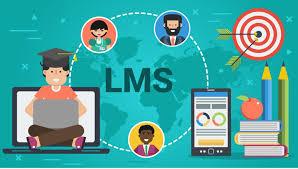Essential Features to Look for in a Learning Management System

Selecting the right learning management system is crucial for efficient and effective training. Whether you're implementing an LMS for corporate training, onboarding, or skill development, understanding what features matter most will help you make the right choice.
User-Friendly Interface That Simplifies Navigation
A well-designed interface ensures users can focus on learning rather than figuring out the system:
-
Intuitive dashboard for both learners and administrators
-
Easy course search, filtering, and categorization
-
Mobile-responsive design for learning on the go
User experience impacts engagement and learning outcomes.
Customizable Learning Paths for Personalized Training
Every organization has unique training needs. A good LMS should allow:
-
Tailored learning journeys by department or job role
-
Prerequisites and course progression control
-
User-specific content access based on learning goals
Personalization increases relevance and retention.
Robust Content Management and Course Creation Tools
Your LMS should support versatile content creation and management:
-
Upload and organize multimedia files (videos, PDFs, SCORM, etc.)
-
Drag-and-drop course builder with templates
-
Ability to import/export courses for sharing
Rich content creation tools help maintain training quality.
Interactive Learning Features That Engage Learners
Engagement drives success in eLearning. Look for an LMS that supports:
-
Quizzes, simulations, and scenario-based learning
-
Polls, surveys, and real-time feedback tools
-
Gamification features like points, badges, and leaderboards
These tools promote active participation.
Seamless Integration with Business and HR Tools
For workflow efficiency, your LMS must connect with existing systems:
-
HRIS, CRM, or payroll software integration
-
Single sign-on (SSO) and identity management support
-
API access for custom integrations
Integration improves consistency and automation.
Detailed Reporting and Analytics to Measure Impact
An LMS should provide insight into learner progress and training performance:
-
Real-time dashboards and visual analytics
-
Completion rates, test scores, and time tracking
-
Exportable reports for management reviews
Analytics enable data-driven decisions.
Mobile Learning Capabilities for Remote Access
Modern training must be accessible from anywhere. Look for mobile-friendly features:
-
Full-featured mobile app or responsive browser interface
-
Offline access with automatic syncing
-
Notifications and reminders via mobile
This supports learning beyond the traditional desktop.
Scalability and Multi-Tenant Architecture
Your LMS should grow with your organization:
-
Support for large user bases and multiple departments
-
Role-based access and admin delegation
-
Cloud hosting for uptime and reliability
Scalability ensures long-term use without replatforming.
Compliance and Certification Management
For regulated industries, your LMS should handle compliance training:
-
Automated tracking of certifications and expiration dates
-
Custom workflows for mandatory training
-
Audit trails and downloadable records
This reduces risk and ensures policy adherence.
Security and Data Privacy Controls
With sensitive user data involved, LMS security is critical:
-
SSL encryption and secure login protocols
-
Role-based permissions and access restrictions
-
Data backups and GDPR/CCPA compliance
These features protect both organizational and learner data.
Blended Learning Support
A versatile LMS should accommodate various learning modes:
-
Integration of online modules with in-person sessions
-
Calendar management for instructor-led training
-
Attendance tracking and follow-up assessments
Blended learning supports hybrid work environments.
Social and Collaborative Learning Tools
Learning is more effective when it’s shared. Your LMS should offer:
-
Discussion forums and chat features
-
Peer-to-peer file sharing and commenting
-
Collaborative projects and virtual breakout rooms
These features encourage community and knowledge sharing.
Multilingual and Localization Support
If your organization operates globally, multilingual support is essential:
-
Interface translation and localized content
-
Right-to-left language compatibility
-
Geo-targeted course access settings
Localization enhances inclusivity and comprehension.
Regular Updates and Technical Support
Ongoing improvement ensures your LMS stays relevant:
-
Frequent feature updates and system enhancements
-
Reliable customer support and live chat
-
User documentation and knowledge base access
Strong support ensures smooth adoption and usage.
- Art
- Causes
- Crafts
- Dance
- Drinks
- Film
- Fitness
- Food
- Spiele
- Gardening
- Health
- Startseite
- Literature
- Music
- Networking
- Andere
- Party
- Religion
- Shopping
- Sports
- Theater
- Wellness


